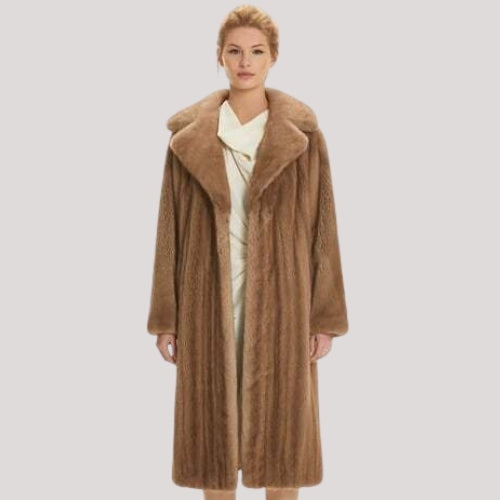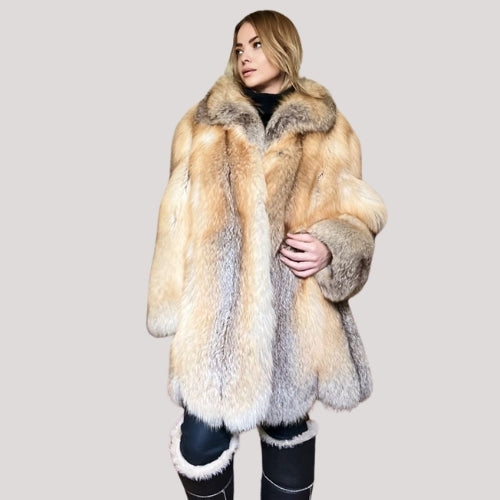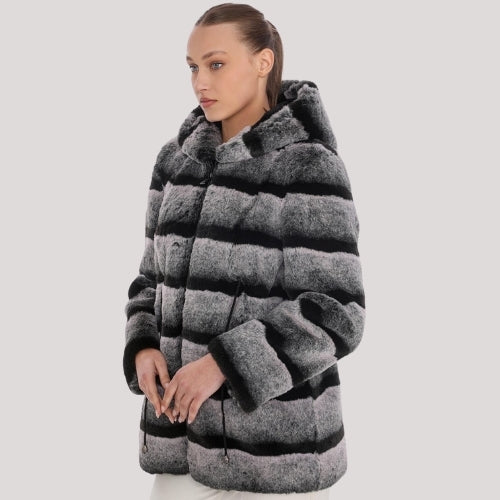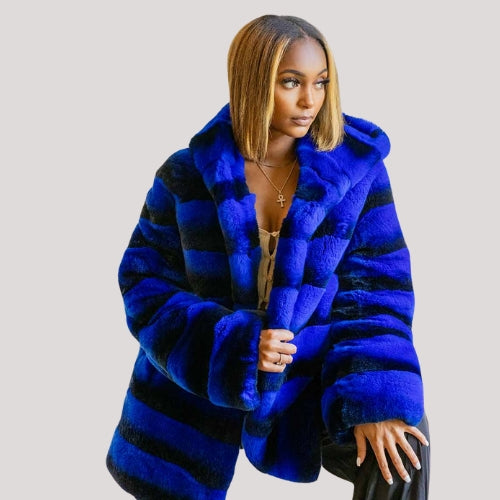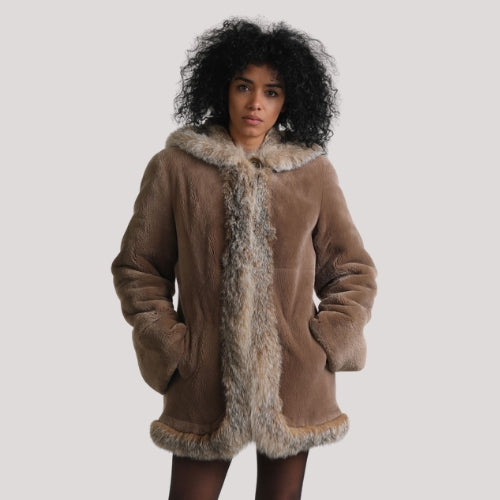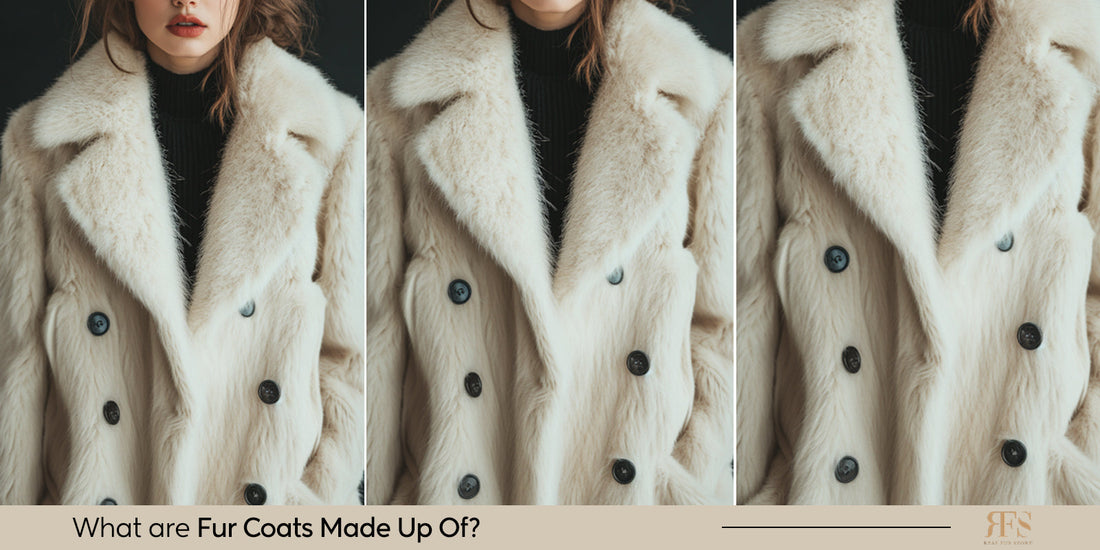
What are Fur Coats Made of?
Have you ever looked at your favorite influencer or a celebrity from the movies flaunting their fur coats at the MET or on the Red Carpet in all its glory? Went to look online and check the hefty price tag that makes you wonder, "How are fur coats made?" Well, to answer your question in the simplest form, "The process involves sourcing animal pelts, processing them, designing, and finally crafting the coat."
That's the real deal, but if you want to get into the details, this article explores each step, from raw pelts to the finished luxurious garment. But before we get to it, let's:
Understanding Fur Coats

The drama of fur coats lies in their softness, warmth, and the unique aesthetic they offer. Each type of fur has its own set of characteristics, which can greatly influence the style and feel of the coat. For instance, mink fur is renowned for its softness and durability, making it the most popular choice for fur garments worldwide.
Fur coat prices vary widely; rabbit fur is the least expensive, whereas mink and lynx are pricier due to factors like fur quality, animal rarity, and the craftsmanship required to transform raw pelts into luxurious garments. If you have a question, how are mink coats made? Well, it's the same process. However, although expensive, these coats are valued for their reflection of personal taste and fine craftsmanship.
While faux furs are gaining popularity as ethical and affordable options, natural fur continues to be favored for its superior quality and luxurious texture. Whether one opts for real fur or faux fur, the appeal of fur coats remains strong, driven by their rich history and enduring elegance.
The Anatomy of a Fur Coat
A fur coat is a complex garment made up of multiple layers, each serving a specific purpose. The visible fur, often the most eye-catching element, is supported by a lining made from materials such as wool batting and horsehair canvas to boost warmth and structure. Wool batting, in particular, adds insulation without increasing bulk, ensuring the wearer stays warm while maintaining ease of movement.
Interfacing materials such as flannel and herringbone tape play a crucial role in reinforcing seams and maintaining the garment’s shape. These elements are meticulously hand-stitched to create a skeleton structure that supports the fabric, ensuring a precise fit and long-lasting durability. The outer fabric, which is the fur itself, is not only about aesthetics; it heavily influences the coat’s functional properties, such as its insulating properties and overall durability.
How are fur coats made? They involve a mix of traditional hand techniques and modern methods to ensure a seamless finish. Skilled furriers like RFS work diligently to ensure each piece fits together perfectly, creating a garment that is both beautiful and functional. This intricate construction process is what fur coats are made of and what sets high-quality fur coats apart from mass-produced outerwear.
How are Fur Coats Made

The answer to how are fur coats made? It is a meticulous process involving several stages, each requiring a high level of expertise. From sourcing the finest pelts to the final quality control checks, every step is crucial in ensuring the garment meets the high standards expected in the luxury market. Let's break it down for you:
The making of a fur coat involves several stages, including:
- Sourcing the finest pelts
- Processing the pelts
- Designing the garment
- Crafting and assembling the coat
Each stage requires a high level of expertise and is crucial in ensuring the garment meets the high standards expected in the luxury brands market.
Sourcing Animal Pelts
The journey of how fur is made begins with sourcing the animal pelts. Fur-bearing animals such as mink, fox fur, and beaver are commonly farmed for their high-quality pelts. Mink fur, in particular, is prized for its softness and durability, making it a favorite in the fur industry. Fur farms, many of which are family-owned, contribute significantly to rural economies and have been passed down through generations.
Animal welfare is a priority in modern fur farming practices. Farms are regulated by strict legislation, ensuring that fur animals raised are provided with clean water, nutritious food, and are free from suffering. Transparency in fur farming has also increased, with some farms inviting public visits to demonstrate their standards.
The fur industry is a major economic activity employing around one million people globally. More than 80% of commercial fur is farmed. The pelts sourced from these farms are meticulously selected for their quality, ensuring that only the finest materials are used in fur garments.
The diversity of fur is vast, with each type offering distinct qualities. For instance, beaver fur is celebrated for its durability and plush feel, while lynx fur coat is prized for its luxurious softness and striking patterns. This variety enables designers to craft a wide array of fur garments, catering to various tastes and preferences.
Processing Raw Pelts
After sourcing, whole pelts undergo several preparation processes for garment production, starting with skinning the animal to keep the hide intact. This is followed by fleshing, a crucial process that removes extraneous flesh, fat, and membrane from the pelt.
The pelts are then subjected to chemical washes to soften the leather and remove contaminants. The tanning or salt-curing processes preserve the leather, preventing it from decomposing. After drying, the pelts are conditioned in a rotating drum with hardwood sawdust and a mineral solution to enhance their texture further.
Oils and mechanical methods are used to soften the leather to achieve the desired softness. Optional processes like plucking and shearing can enhance the fur’s quality by removing guard hairs and creating a softer texture. These steps ensure the pelts are in perfect condition for the next production stage.
Designing Fur Garments
The design process for how fur is made begins with creating sketches and patterns on canvas or muslin to visualize the garment. This initial step is crucial as it sets the foundation for the final product. Designers then select pelts that match in size, color, density, and texture to ensure a cohesive look.
Customization options are vast, allowing old fur coats to be transformed into new forms like fur vests, fur jackets, or accessories. Techniques such as shearing can reduce the fur's bulkiness, making the garment lighter and more comfortable. The ‘letting out’ technique involves cutting a pelt into strips and sewing them together, creating a longer and thinner appearance.
Dyeing has become a popular method for adding color to fur garments, with techniques like immersion and airbrushing used to achieve vibrant hues and patterns. Blocking is another essential process to remove ripples from the pelts by moistening the leather and stretching it over a pattern. These creative processes are what fur coats are made of by transforming simple pelts into stunning fashion statements.
Crafting the Fur Coat
Crafting a fur coat is where the magic truly happens. The first step involves selecting the highest-quality pelts. After that, a highly skilled artisan is given the responsibility of cutting the fur into patterns that reduce waste while ensuring the pieces fit together perfectly. This skill requires precision and expertise.
Next comes the assembly. Artisans use a combination of hand and machine techniques to ensure a seamless finish when assembling fur coats. Intricate stitching techniques are crucial for the garment's structural integrity and aesthetics. Skilled artisans prepare and sew each piece with a focus on intricate details, creating a functional and beautiful garment.
The final touches include adding linings, wool structure, and decorative elements like zips, buttons, and labels. These finishing touches enhance both the comfort and overall appearance of the fur garment. The craftsmanship involved in this stage makes each fur coat a unique piece of wearable art.
Quality Control in Fur Production
Quality control is essential to fur production, ensuring that each garment meets the high standards expected in the luxury market. Inspections are conducted at various stages of production to catch defects early and maintain consistency in product quality. This rigorous process is vital in minimizing defects and ensuring the final product is flawless.
Data collection and analysis are crucial in quality management, allowing for real-time monitoring of production issues. Automated inspection systems are often employed to enhance accuracy and reduce human error in quality assessments. Implementing a quality culture across all production levels is key to maintaining the high standards associated with luxury fur garments.
Why Fur Coats Are Expensive

The high cost of fur coats is influenced by several factors, starting with the quality and original cost of the pelts. Certain types of fur, such as lynx, command higher prices compared to others, such as how mink coats are made of or let’s say rabbit fur coats. The rarity and quality of the fur significantly impact the final price of the garment.
Craftsmanship is another critical factor contributing to the cost of fur coats. The meticulous process of creating a fur coat requires significant time and skill, making these garments less suitable for mass production. Each coat is the result of hours of labor by skilled artisans, who ensure that every detail is perfect.
Longer fur coats also tend to be more expensive due to the additional materials and labor required for their production. The combination of high-quality materials, exceptional craftsmanship, and the time-intensive production process is what makes fur coats a luxury item worth the investment.
Summary
Fur coats are luxurious garments that undergo a meticulous production process, from sourcing the finest pelts to ensuring the highest standards of quality. The craftsmanship involved and the quality of the materials used are key factors contributing to their high cost and timeless appeal.
Frequently Asked Questions
How should fur garments be stored?
Fur garments should be stored in a cool, controlled environment to ensure their longevity, as typical home conditions may not be suitable. Proper storage is essential for maintaining the quality of the fur.
How often should fur coats be cleaned and conditioned?
It is advisable to clean and condition fur coats annually to preserve their quality and appearance. Regular maintenance will also extend the life of your fur.
What is the most popular type of fur sold?
Mink is currently the most popular type of fur sold, and it is appreciated for its lightweight quality and versatile styling options.
What factors determine the quality of a fur coat?
The quality of a fur coat primarily depends on the pelts used, the design, and the craftsmanship involved in its production. Ensuring high standards in these areas is essential for a superior product.

